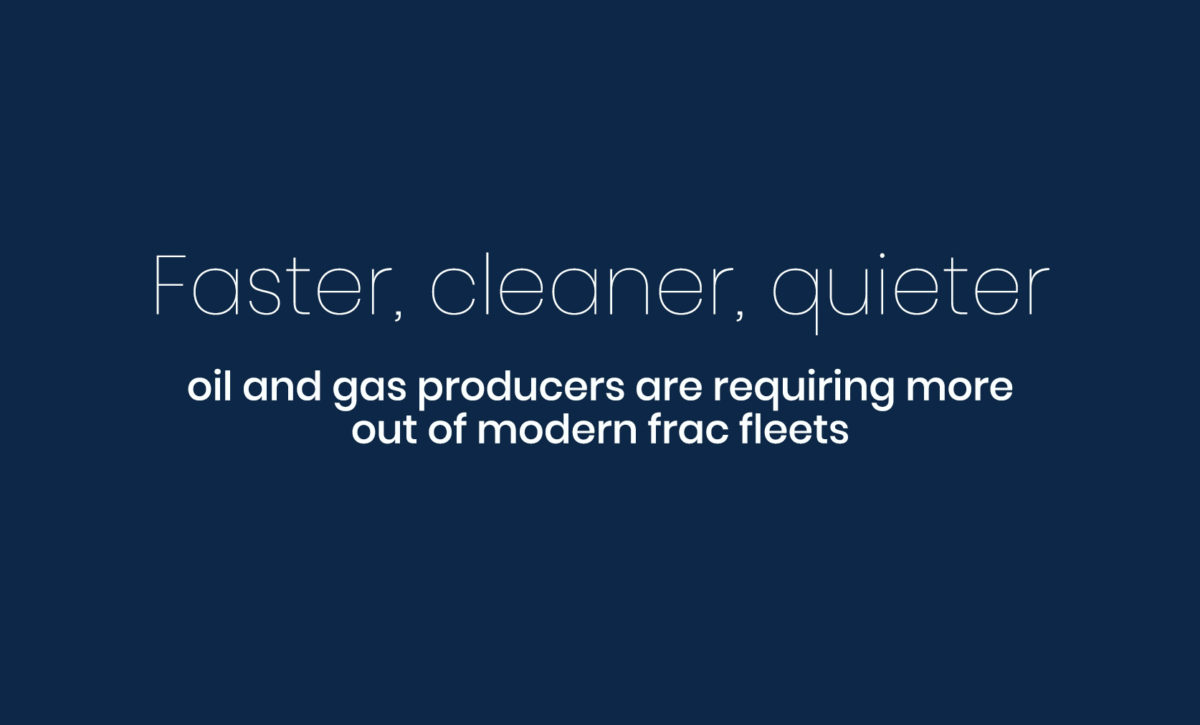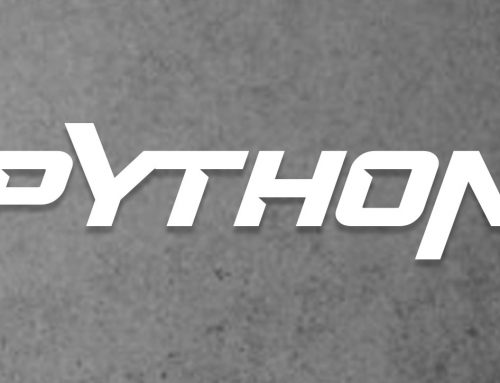Conventional hydraulic fracking
Since Mitchell Energy’s fracking technique opened up the U.S. shale plays in the late 1990s, hydraulic fracking has helped to push the United States towards energy independence.
Hydraulic fracking is the process of pumping a mixture of water, sand and chemicals at high pressure deep into the ground to crack open subterranean bedrock, allowing trapped oil or natural gas to flow more freely. The increased oil and natural gas flow allow well operations to remain economically feasible.
Hydraulic fracking requires a whole fleet of specialized mobile equipment to pump fracking fluids into the ground at a well pad. Conventional frac fleets have been comprised of a slurry blender to mix fracking fluids, high-pressure, high-volume pumps running diesel-fueled engines to push the mixture of fluids into the wellbore and mobile control centers to monitor the fracking activity.
Oilfield service companies operate these mobile frac fleets as efficiently and reliably as possible and are always looking for ways to minimize costs and environmental impact.
Alternatives to conventional fracking
To meet evolving environmental regulations, and producer’s demands for a reduction in greenhouse gas emissions and noise pollution, service companies are investing in innovative new technologies for their frac fleets.
Conventional frac fleets have been mainly powered by diesel fuel. Today, electric-powered fleets are making their way onto the scene, promising fewer opportunities for mechanical failure, reducing downtime. Electric fracking, or e-frac, replaces conventional diesel engines and transmissions with electric motors and electronic controls.
E-frac operations are powered by an electrical source, usually a gas turbine. Natural gas, often derived from a producer’s own local natural gas well, powers the gas turbines, which significantly cuts down on fuel costs and on the carbon dioxide emissions released during conventional hydraulic fracking operations.
In addition to lower fuel costs and a reduction in emissions, e-frac fleets operate at a much quieter noise level than conventional diesel-powered frac fleets. This reduction in hazardous noise pollution addresses environmental concerns, helps oilfield workers safely communicate on site and allows crews to operate much closer to residential and commercial areas.
Another alternative to frac fleets running conventional diesel engines is the Dynamic Gas Blending (DGB) engine. Available as an EPA certified Tier II or Tier IV engine, DGB dual-fueled engines can operate on straight diesel fuel, or a combination of diesel and natural gas, including the capability to run on field gas. This allows operators a savings on fuel without giving up the performance of a diesel engine.
The Cat® 3512E DGB well service engine meets Tier IV Final emission standards on diesel and gas and has a maximum diesel displacement rate of 85%. The flexibility offered by this engine allows a wide variety of fuels to be used while meeting emissions standards.
Fracking during the downturn
With the current price of oil in the mid $20s, frac crews are not in high-demand as they were just a few months ago. Diesel-powered frac fleets have been hit particularly hard and are sitting idle while operators are turning to the value-added options e-frac and DGB engines provide.
Also, many operators are using the current downturn as an opportunity to phase out their Tier I frac fleets for more reliable and efficient Tier II and Tier IV options.
How Grizzly is responding
Grizzly Services is well positioned to help oil and gas service companies upgrade their current frac fleets so they meet and exceed changing industry regulations. We offer refurb, fabrication, and manufacturing, as well as new-build options for the fracking industry.
We can build your new e-frac trailer fleet from the ground up with our in-house expertise.
We can also extend the life of your diesel powered frac fleet by retrofitting your frac trailer’s current diesel engine to a Tier II, dual-fuel DGB engine.
We warranty our work, giving you the peace of mind that we will stand behind the products we build with confidence. We service what we sell.
Grizzly is doing more than just rebuilding, we are upgrading the technology that is in high demand from the oil and gas industry.
Let Grizzly upgrade your frac fleet today. Contact Grizzly today and let our team of engineers, welders, assemblers, electronic technicians, service mechanics and project managers take on your next project.




